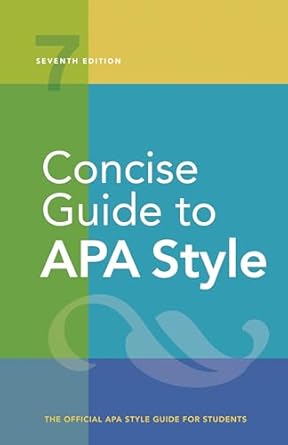[toc]
citation styles guide mastering academic references
Concise Guide to APA Style: 7th Edition (OFFICIAL)
Page 208 Review
Analyzing Citation Styles in Academic Writing: A Deep Dive
The provided text delves into the nuances of citation styles, particularly focusing on the guidelines for academic writing.
Understanding these rules is crucial for maintaining academic integrity and properly attributing sources.
This analysis will break down the key aspects of the text, highlighting the practical applications of each rule.
Handling Multiple Works by the Same Author
The text emphasizes the importance of clarity and consistency when citing multiple works by the same author. “the authors’ surnames once; for each subsequent work, give only the date.” This simplifies the citation and avoids redundancy.
For instance, the example demonstrates this with the Department of Veterans Affairs:
“(Department of Veterans Affairs, n.d., 2017a, 2017b, 2019)”
and Zhou:
“(Zhou, n.d., 2000, 2016, in press)”
This approach is efficient and helps readers quickly identify the relevant publications from a single author.
Addressing Multiple Works with Abbreviated Author Lists
When dealing with multiple works where some author names are abbreviated to “et al.,” the text advises chronological ordering. “In the case of multiple works in which some author names have been abbreviated to “et al.” (see Section 8.17), place the citations in chronological order (regardless of the order in which they appear in the reference list).” This ensures that the evolution of research is presented logically.
For example:
“(Carraway et al., 2013, 2014, 2019)”
This chronological arrangement helps readers understand the progression of research findings over time.
Prioritizing Relevant Citations within Parentheses
The text introduces a strategy for highlighting the most relevant works within a given sentence. “To highlight the work(s) most directly relevant to your point in a given sentence, place those citations first within parentheses in alphabetical order and then insert a semicolon and a phrase, such as “see also,’ before the first of the remaining citations, which should also be in alphabetical order.” This allows authors to emphasize key sources without disrupting the overall alphabetical order.
The example demonstrates this effectively:
“(Sampson & Hughes, 2020; see also Augustine, 2017; Melara et al., 2018; Pérez, 2014)”
This approach allows for emphasis on the most recent or important research while still providing a comprehensive list of relevant sources.
Managing Long Strings of Citations
The text cautions against including overly long strings of citations. “Readers may find a long string of citations difficult to parse, especially if they are using assistive technology such as a screen reader; therefore, include only those citations needed to support your immediate point (for more on appropriate level of citation, see Section 8.1).” The goal is to provide sufficient support for the argument without overwhelming the reader.
This is particularly important for accessibility, ensuring that those using screen readers can easily navigate the text.
Citing Multiple Sources within a Sentence’s Narrative
When sources are cited within the narrative of a sentence, they can appear in any order. “If multiple sources are cited within the narrative of a sentence, they can appear in any order.” This provides flexibility in how the author integrates the sources into their writing.
For example:
“Suliman (2018), Gutiérrez (2012, 2017), and Medina and Reyes (2019) examined…”
This allows for a more natural flow of the text, as the author can choose the order that best suits the sentence structure.
Citing Specific Parts of a Source
The text provides guidance on citing specific parts of a source. “To cite a specific part of a source, provide an author-date citation for the work plus information about the specific part.” This is essential for accurately referencing specific information within a larger work.
The specific parts that can be cited include:
“pages, paragraphs, sections, tables, figures, supplemental materials, or footnotes from an article, book, report, webpage, or other work”
This level of detail ensures that readers can easily locate the exact information being referenced.
Conclusion
In conclusion, the text provides a comprehensive overview of citation guidelines, covering various scenarios and emphasizing the importance of clarity, consistency, and accuracy.
By following these guidelines, authors can ensure that their work is both credible and accessible to a wide audience.
Understanding these nuances is critical for anyone involved in academic research and writing.
Buy full ebook for only $18: https://www.lulu.com/shop/american-psychological-association/concise-guide-to-apa-style-7th-edition-official/ebook/product-rmzpq54.html?page=1&pageSize=4
Citation Styles Guide Mastering Academic References
Read more: Quotation Mark Mastery: A Punctuation Guide


Leave a Reply